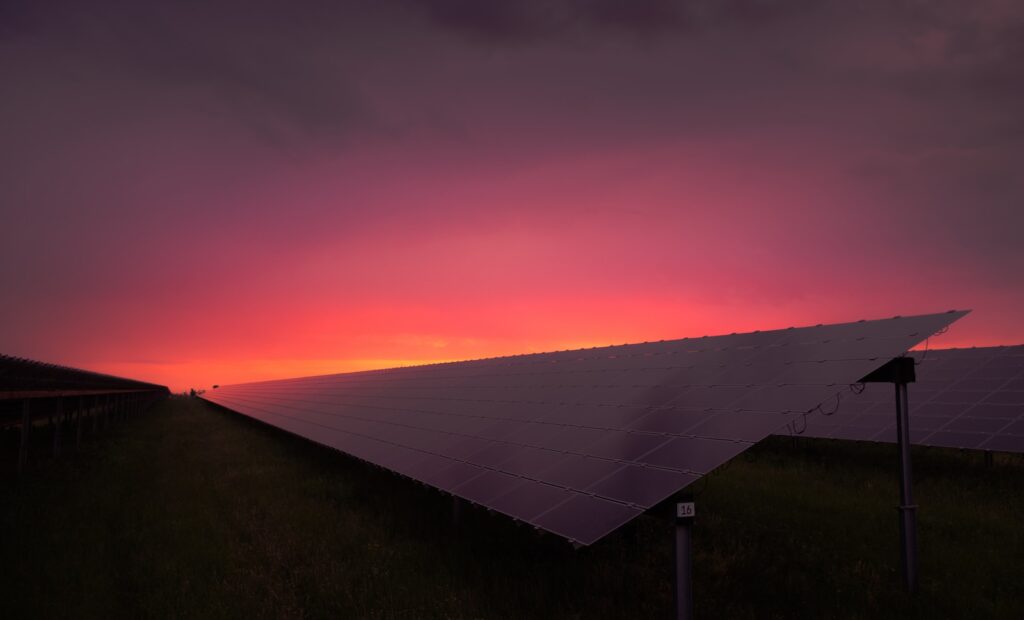Solar energy and the future of power
The journey to net zero carbon emissions has begun, but many solutions often still rely on finite resources. So can solar plug us in to a genuinely sustainable power grid? We take a closer look.
In a world where energy is a key fundamental in the way we live, what does the future hold for our energy production? As our reliance on fossil fuels persists to meet demand, and the concern over their finite nature grows, what sort of sociopolitical implications arise in the wake of increasing pressures of being renewable?
Where does our electricity come from?
Fossil fuels equated for over half of global electricity, with low-carbon sources such as nuclear and hydropower generating around 25%, and wind, solar and other renewables making up the rest.
In 2021, stats showed the world consumed around 25,343 Terawatt-hours of electricity.
To put that in perspective, imagine every person on the planet having 53 typical 60-watt lightbulbs, all turned on simultaneously. It’s a huge amount of energy, and as it stands, around 90% of the world’s population have access to it.
When will our current energy supplies run out?
Fossil fuels, including coal, oil and natural gas, have been primary sources of energy for over 150 years. It is no secret that their extraction and consumption continue to have a negative impact on the earth.
The exact timeline for when these resources will run out depends on various factors such as consumption rates, technological advancements, and exploration efforts. Current estimates sit at oil and gas reserves depleting after a few more decades, while the coal reserves could last for a century or more.
This means it’s possible that people alive today will see the total depletion of oil and gas.
Green Investment
With the inevitable end of fossil fuels, the world will be forced to turn to renewable sources of energy, and we’re already seeing a global trend to do just this. Governments around the world have set net zero goals, with mass changes to infrastructure all being implemented to combat the growing global temperatures that break records year after year.
Stringent environmental regulations and international agreements, such as the Paris Agreement, are also pushing companies to transition to cleaner energy sources. Fossil fuel companies often face increased scrutiny and potential legal challenges if they continue to rely solely on non-renewable resources, pushing them to diversify their energy portfolio.
In 2022 Shell reported a record annual profit of $40bn, owed to the rocketing oil and gas market prices. According to the company, they also Invested $8.2bn in low-carbon and non-energy products, around a third of their total cash expenditure for that year.
While their motivations may be a mix of environmental responsibility and profit-seeking, it’s clear the two are not mutually exclusive. Traditional fossil fuels are finite resources, subject to price volatility and geopolitical uncertainties.
Companies like Shell are recognizing the long-term sustainability, and stability, that renewable energy can offer, making it a strategic business move to invest in these resources. But where does that leave the rest of us? Will we be forever tied in to paying for our energy?
The Future is Solar
In the ever-evolving landscape of renewable energy, solar panels stand out as an optimal solution in response to fluctuating energy prices and climate change. Solar has seen a huge uptake in popularity over the last decade and currently generates around 4.5% of global electricity.
Solar Cells are made primarily from silicon, which is the most abundant element on earth (after oxygen), as 27% of the Earth’s crust is made from it. To put it plainly, we’re not running out anytime soon.
Solar panel technology has witnessed remarkable advancements that are revolutionising energy production. Emerging technologies such as perovskite solar cells and bifacial panels have breathed new life into the solar industry, enhancing efficiency and affordability.
This, along with energy sector investments, leads to thousands of large-scale solar developments around the world. China, who has been at the forefront of solar tech for many years, has almost 10x its output in the last decade. In fact, today 97% of solar cells are made in China and shipped across the world.
Over the next few decades, we’re likely to see other countries become global leaders in the manufacturing of solar technology, with India and even parts of Europe making huge strides in just this. This should have the effect of driving further competition and reducing wholesale prices, which in turn will mean more people will have access to affordable solar tech, adding to the rise of domestic installations.
Energy Storage for the Future
With the advancements in solar tech, coupled with their rising popularity both commercially and domestically, energy storage technology must keep pace to handle the influx of electric generation.
Innovations in battery technology, coupled with improvements in materials and grid integration, are likely to usher in a new era of efficient and reliable solar energy storage. Lithium-ion batteries, which have already made substantial strides in capacity and cost reduction, are expected to further evolve, with enhanced energy density and longer lifespans becoming standard features.
The costs of solar batteries are also something expected to decrease due to competition and their rising popularity in the solar energy sector.
The global lithium supply currently stands at around 88 million tonnes. Of that number, only a quarter is economically viable to mine. Does that mean we will run out?
The short answer is no. We will no doubt have to improve the current technology used to mine Lithium to unlock access to larger deposits, as well as keep up with the growing demand due to increasing pressures of government net zero targets and a booming EV car market.
Additionally, emerging technologies like solid-state batteries and flow batteries could potentially address some of the limitations of traditional lithium-ion batteries, such as safety concerns and scalability.
These improvements will translate into solar energy systems that can capture excess energy during peak production periods and discharge during times of high demand, thereby overcoming intermittency issues and ensuring a more stable power supply.
What if everyone had solar?
Firstly, could this even be done? Given enough time, yes. The process of making panels along the materials needed are abundant enough that technically we could install panels on every rooftop on the planet.
Would this cover all of our demand? If everyone not only had panels, but sufficient battery storage as well, we could cover a large portion of our needs, especially in summer months.
However, come winter, we would see a sharp drop off in generation, meaning we would need large scale energy storage, or additional power stations to bridge the deficit.
Nuclear energy, despite not being totally renewable, along with wind and hydro, could easily fill that void for the next few hundred years and beyond. It would also solve the intermittency issues associated with solar, especially if sufficient energy storage had not yet been established.
Of course, we would also see the positive effect on the environment solar would create. If we opted for large solar farms in the sunniest areas of the world (mainly deserts) we could see global temperatures decrease by 2°C, as solar radiation would be absorbed by the panels and not by the earth. This would have the knock-on effect of less extreme weather on a global scale, and less precipitation in affected areas, further boosting solar generation.
The transition of everyone generating their power could have the negative effect of costs rising exponentially for those winter months, where you would need to import. Energy companies no doubt would have to look at other means of taking on your energy exports, perhaps to the point that you wouldn’t receive an income from said exports, as well as increasing import prices to maintain their business to be financially viable.
The world will inevitably need to transition to greener sources of energy if we are to continue our way of life, but first it must change its attitude to green technology. Our society must be properly educated on how to manage their energy, as well as given equal access to said technology.
We will definitely see a global shift onto renewable sources of energy over the next 50 years, and the large conglomerates will no doubt be at the forefront of this investment.
We can only hope that the rising competition of solar technology will mean all of us can afford to have our own systems installed, and escape from the price volatility and geopolitical uncertainties that comes with fossil fuels.
More features:
https://environmentjournal.online/features-opinion/heres-looking-at-you-qatar-water-management-in-a-desert-state/
https://environmentjournal.online/headlines/ecological-crisis-experts-not-influencers/
https://environmentjournal.online/features-opinion/first-of-a-kind-foak-thinking-is-essential-in-climate-technology/
Image: Karsten Würth / Donald Giannatti / Giorgio Trovato


















